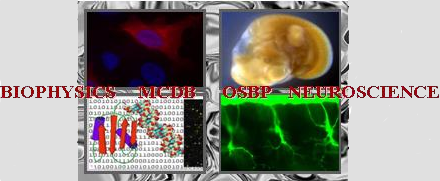Talk abstracts
Talk on Wednesday 04:45-05:00pm submitted by Andrea R. Patterson
The role of stromal estrogen receptor in mammary gland reprogramming following in utero BPA exposure
Andrea R. Patterson (Molecular, Cellular & Developmental Biology Program, Department of Molecular Genetics, and The Arthur G. James Comprehensive Cancer Center, Columbus, Ohio, USA ), Xiaokui Mo (Center for Biostatistics, Ohio State University Wexner Medical Center), Ali C. Shapiro (Department of Molecular Genetics, and The Arthur G. James Comprehensive Cancer Center, Columbus, Ohio, USA ), Hannah L. Helber, Nanditha Ravichandran (Department of Molecular Genetics, and The Arthur G. James Comprehensive Cancer Center, Columbus, Ohio, USA ), Claire E. Kovalchin (Life Sciences Education, The Ohio State University, Columbus, Ohio, USA), Craig J. Burd (Department of Molecular Genetics, and The Arthur G. James Comprehensive Cancer Center, Columbus, Ohio, USA )
Abstract:
In utero exposure to estrogenic compounds, collectively known as endocrine disrupting compounds (EDCs), is linked to increased risk for later life development of breast, uterine and cervical cancers. It is estimated that greater than 80% of breast cancers are attributable to environmental factors and significant evidence suggests that early life exposure to a known EDC, bisphenol A (BPA), is a contributor. While it is believed that activation of the estrogen receptor (ER) is critical for this pathogenesis, the molecular mechanisms are not defined. We utilized an in utero model to characterize the effects of BPA on mammary gland development. ERα expression was demonstrated to be strictly mesenchymal during early mammary bud formation despite evidence of epithelial defects in BPA-treated adult mammary glands. The gap between mesenchymal ER expression and later life epithelial defects led us to examine varied embryonic exposures to BPA in utero. We found that the different degrees of mammary gland defects were dependent on the varied embryonic exposure received. Further, we found early epithelial growth correlated to stromal proliferation. Gene expression and DNA methylation analyses of isolated adult mammary fibroblast, luminal and basal epithelial cell populations demonstrated cell type-specific effects of in utero BPA. Interestingly, extracellular signaling was a pathway significantly altered by BPA suggesting epithelial defects may be caused in part by inappropriate mesenchymal ER activation through paracrine-based signaling. These findings were supported by distinct epigenetic changes detected between these cell populations indicating discrete reprogramming mechanisms. Together, these data support a model by which mammary defects caused by in utero BPA results in reprogramming of the stroma distinct from epithelial cells. Later life defects in the epithelia may be a result of altered mesenchymal paracrine signals. Our analysis is the first of its kind to investigate alterations in the component cell populations of the mammary gland following in utero exposure to BPA and define the permanent epigenetic changes in the adult tissue. Our findings can later inform analysis of human populations, determining the mechanisms of deregulation that contribute to later life risk.
Keywords: endocrine disruption, bisphenol A, epigenetic
